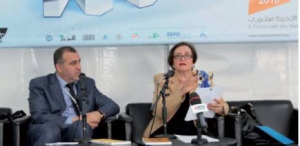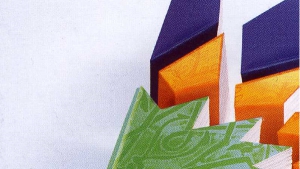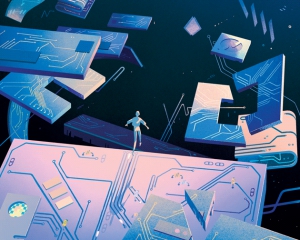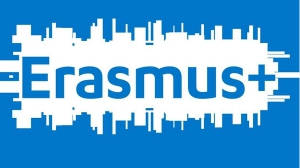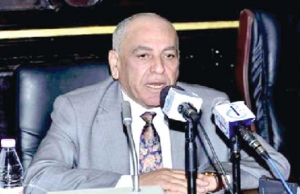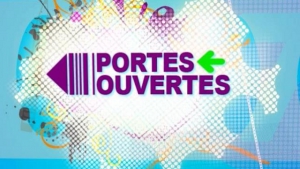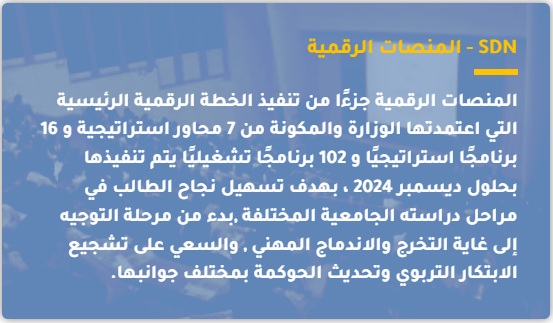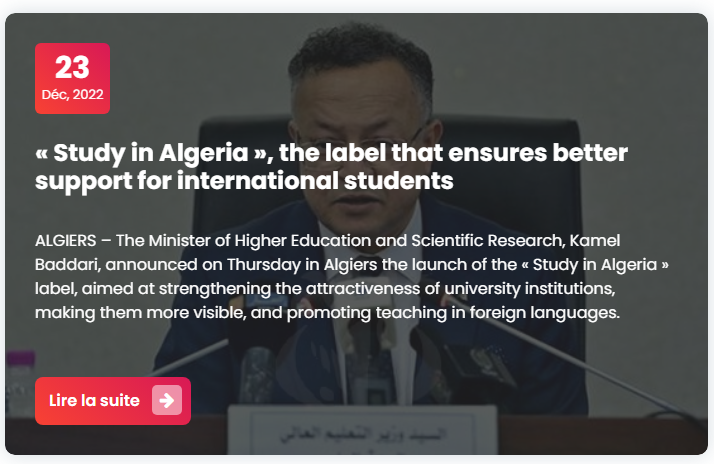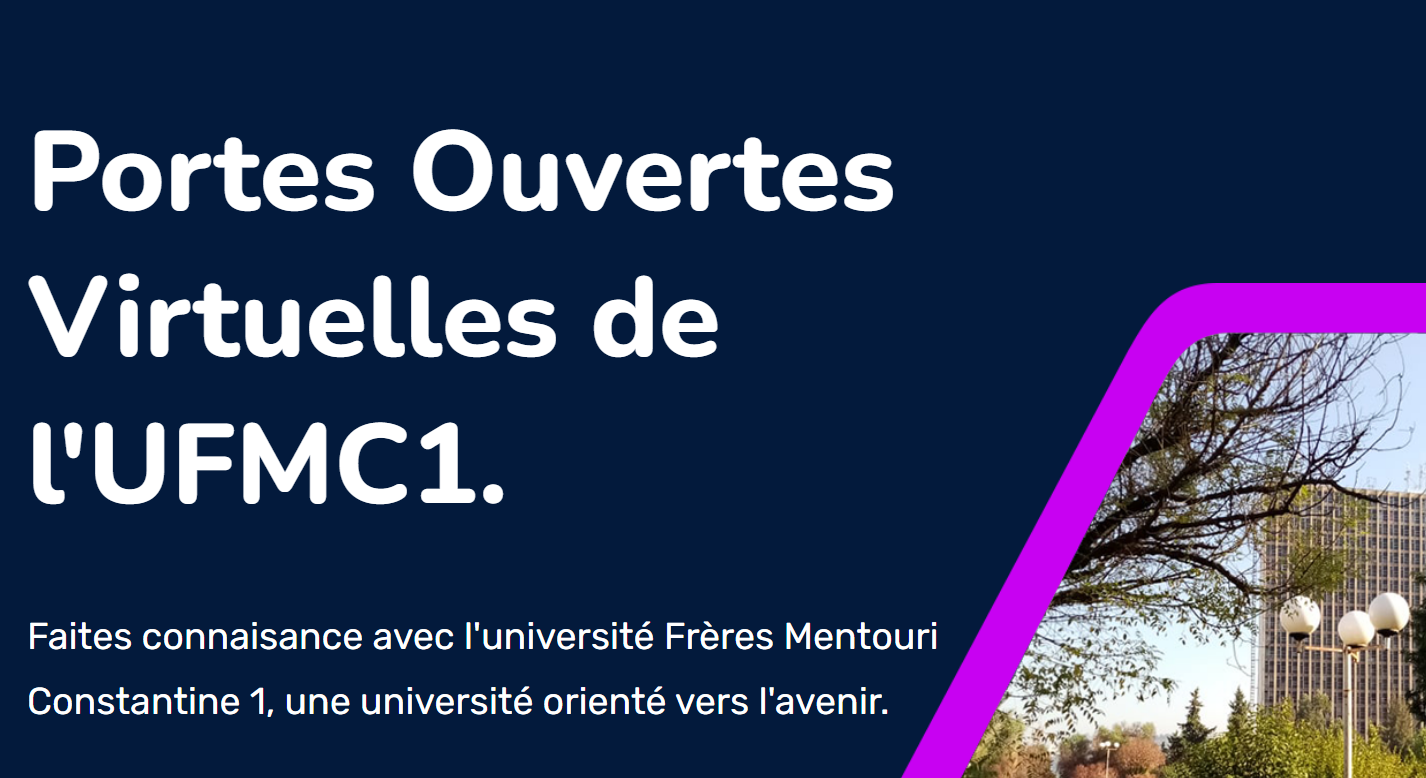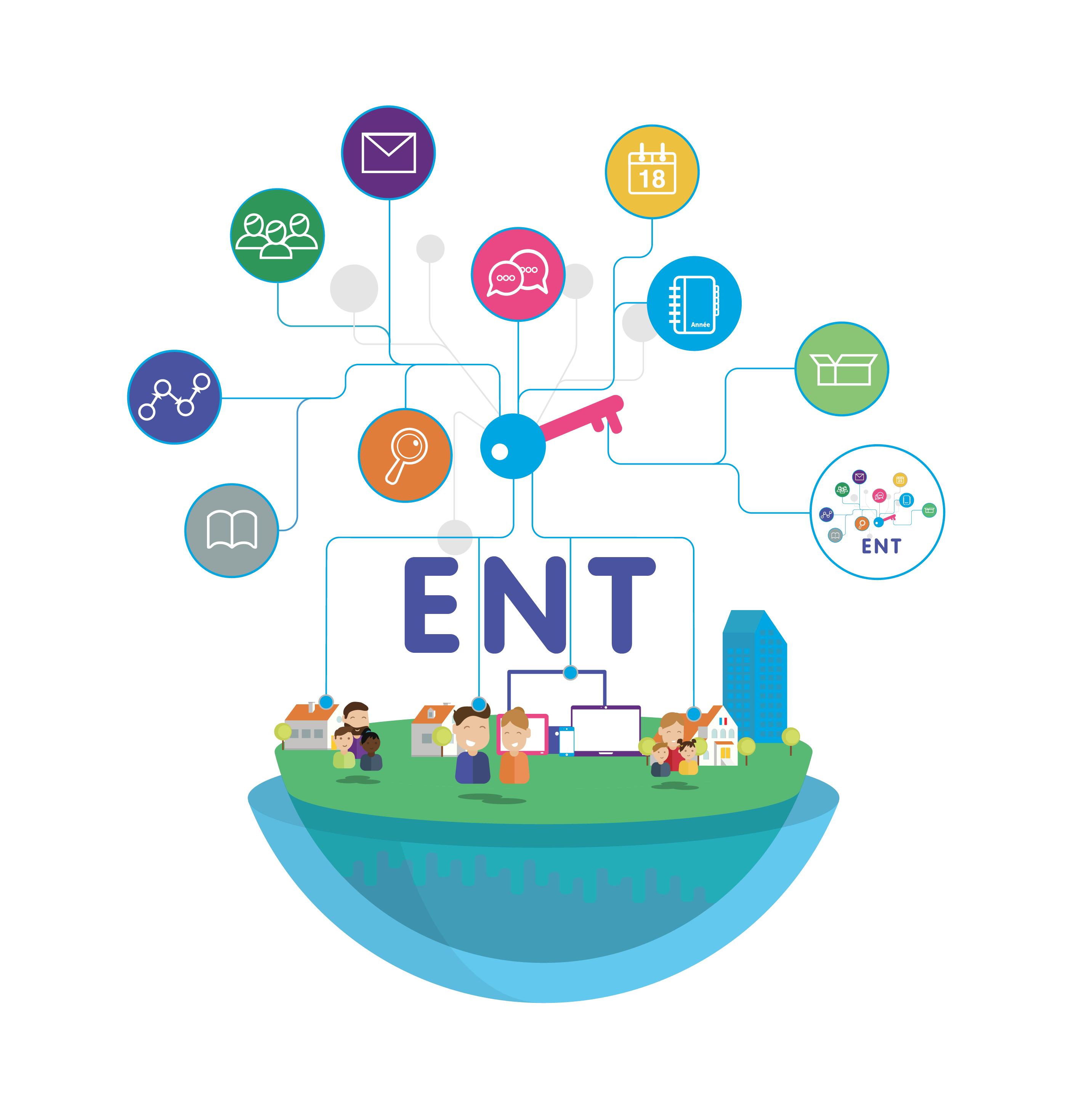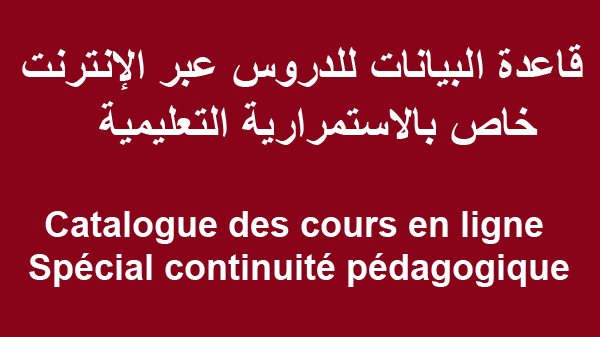ملتقى وطني حول التعديل الدستوري الجزائري لسنة 2016
2016 تنظم كلية الحقوق جامعة الإخوة منتوري قسنطينة ملتقى وطني حول: “التعديل الدستوري الجزائري لسنة 2016 وأثره على منظومة قوانين الجمهورية” أيام 25 – 26 أفريل
اشكالية الملتقى
إن القراءة الأولية للقانون المتضمن تعديل الدستور المصادق عليه من قبل البرلمان الجزائري المنعقد بغرفتيه معا يوم 7 فيفري 2016، تلخص إلى حتمية المساس بالمنظومة القانونية للجمهورية، سواءا بسن قوانين جديدة أو تعديل قوانين سارية المفعول، عضوية كانت أم عادية، وهو ما يتطلب فتح ورشة عمل كبيرة على مستوى البرلمان والحكومة، بإعتبارهما يملكان حق المبادرة بالقوانين طبقا لأحكام الدستور، لعل ذلك هو سبب استعجال السيد رئيس الجمهورية عبد العزيز بوتفليقة استحداث خلية على مستوى رئاسة الجمهورية “بعد المصادقة البرلمانية مباشرة على نص التعديل الدستوري” مهمتها متابعة مدى تجسيد وتنفيذ التعديلات الدستورية المذكورة أعلاه.
ومن هذا المنطق، ارتأت كلية الحقوق بامعة الإخوة منتوري بقسنطينة تنظيم ملتقى وطني بعنوان “التعديل الدستوري الجزائري لسنة 2016 وأثره على منظومة قوانين الجمهورية”، بغرض تسليط الضوء على أهم ما جاء به التعديل الدستوري، من جهة، ومن جهة ثانية إبراز أهم المجالات التي يتعين سن قوانين جديدة بشأنها أو تعديل القوانين المنظمة لها سواءا كانت عضوية أم عادية، والمساهمة آكاديميا بإثرائها عبر رفع توصيات واقتراحات بشأنها من جهة ثانية.
ترتيبا لما سبق، فإن إشكالية الملتقى تدور حول: ما هي أهم التعديلات التي جاء بها القانون المتضمن تعديل الدستور لسنة 2016؟، وما أثرها على منظومة قوانين الجمهورية (القوانين العضوية والعادية)؟.
محاور الملتقى
محاور الملتقى:
المحور الأول: التعديلات الدستورية ذات الصلة بحرية الاستثمار والتجارة وتحسين مناخ الأعمال وضبط السوق وحماية حقوق المستهلكين ومنع الاحتكار والمنافسة غير النزيهة، والمساواة في أداء الضريبة ومعاقبة التهرب الجبائي وتهريب رؤوس الأموال.
المحور الثاني: التعديلات الدستورية المتعلقة بعدم المساس بالحقوق والحريات الفردية والجماعية ذات الصلة بقانون العقوبات وقانون الإجراءات الجزائية وغيرها من القوانين وقانون الاجتماعات والمظاهرات العمومية وقانون الإعلام دون أمر معلل من السلطة القضائية ومختلف الجرائم التي تمت دسترتها.
المحور الثالث: التعديلات الدستورية بالأحزاب السياسية والجمعيات والديمقراطية التساهمية على مستوى الجماعات المحلية، ونظام الانتخابات، وعدم تقييد الحقوق المدنية والسياسية للمواطن إلا بموجب قرار مبرر من السلطة القضائية.
المحور الرابع: التعديلات الدستورية المعنية بحقوق الطفل وقمع العنف ضد الأطفال وحق العامل في الضمان الاجتماعي وترقية التمهين، واستحداث مناصب الشغل، وحق المواطن في بيئة سليمة والحفاظ عليها وواجبات الأشخاص الطبيعيين والمعنويين لحمايتها.
المحور الخامس: التعديلات الدستورية الخاصة بتنظيم المجلس الوطني ومجلس الأمة وعملها، وعلاقتهما بالحكومة.
المحور السادس: التعديلات الدستورية المرتبطة باستقلالية السلطة القضائية والرقابة الدستورية على القوانين والأنظمة، ومراقبة الانتخابات.
Récits de voyage et témoignages sur Constantine ; Des œuvres majeures revisitées par Nedjma Benachour
Un public intéressé a assisté, hier, à une conférence très instructive animée par Nedjma Benachour-Tebbouche autour du thème «L’image de
Constantine dans la littérature algérienne», organisée en marge du Salon national du livre, qui se tient du 11 au 16 avril à l’université Mentouri de Constantine. Maîtrisant parfaitement son sujet, qui a fait l’objet d’une thèse de doctorat d’Etat autour de la représentation littéraire de Constantine à travers différents genres, l’intervenante, professeur à l’université Mentouri, relèvera que contrairement à plusieurs autres villes d’Algérie, l’antique Cirta a suscité depuis des siècles la curiosité des voyageurs et des hommes de lettres, qu’elle a inspirés de par sa lisibilité et ses sites naturels uniques au monde.
Abordant le volet des voyages, elle citera les illustres Salluste, El Idrissi, El Bakri, et autres Ibn Battouta, Thomas Shaw et le non moins illustre Mohamed Ibn El Hassan Al Ouazzan, célèbre sous le nom de Léon l’Africain. C’est dire que La Cité aérienne a toujours fasciné par ses vestiges. Elle le fera aussi pour Eugène Fromentin, devenu peintre après avoir été émerveillé par les Gorges du Rhummel, mais l’on retrouvera également d’autres célébrités à la notoriété avérée dont la ville a laissé des traces éternelles dans leurs œuvres à l’image de Théophile Gautier, Alexandre Dumas, Guy de Maupassant, mais surtout Gustave Flaubert, qui a carrément repris sa célèbre œuvre Salambô, après avoir visité le Vieux rocher.
«Toutes ces œuvres pleines d’une forte charge esthétique sont très importantes pour la ville. Elles font désormais partie de son patrimoine, car Constantine y est très présente, c’est pour cela, qu’on doit se sentir nous aussi partie prenante et on doit penser à les éditer et les publier à grande échelle pour qu’elles soient consultées et facilement accessibles», notera Nedjma Benachour. Sur le volet des témoignages consacrés à la ville, la conférencière citera les innombrables travaux réalisés aussi bien par des juifs (Guy Bensimon et Benjamin Stora), mais surtout les autochtones, à l’instar de Malek Bennabi qui en a consacré de larges passages dans son illustre Mémoires d’un témoin du siècle, Malek Haddad dans La dernière impression et autres Nadjia Abeer, Badreddine Mili, Rachid Boudjedra et le comique Smaïn.
«Constantine est une ville incontournable dans le roman algérien au point que l’on parle du roman constantinois», affirme la conférencière, qui note que depuis la guerre de libération jusqu’à nos jours, en passant par la décennie noire des années 1990, l’antique Cirta est toujours présente dans les œuvres de nombreux romanciers. «Dans les œuvres de Kateb Yacine, Malek Haddad, Rachid Boudjedra, Tahar Ouattar, Rachid Mimouni et autres, Constantine est parfois un refuge fictif ou anthologique, parfois un espace cathartique face à la violence, et dans bien des cas une ville emblématique», indique Nedjma Benachour, pour qui Constantine, qui jouit également d’une grande richesse en littérature orale, continuera toujours à susciter les curiosités et les réflexions.
Arslan Selmane
Salon national du liver de Constantine à l'université des frères Mentouri du 11-16 avril 2016
ARAK EDITION Adresse : Résidence Ennour, immeuble n° 02, Béni Messous, Alger Tél. : 021 93 68 60 0661 94 18 75 Fax : 021 93 02 88 Émail : Cette adresse e-mail est protégée contre les robots spammeurs. Vous devez activer le JavaScript pour la visualiser. arak.editions@ arak.dz www.arakeditions.dz Spécialité : Livre pour enfants
CIRTA BOOKS EDITIONS DES LIVRES Adresse : Cité 11-Décembre-1960, n° 384 Tél. : / Fax : 031 61 19 39 Émail : Cette adresse e-mail est protégée contre les robots spammeurs. Vous devez activer le JavaScript pour la visualiser. Spécialité : Préhistoire, anthropologie, histoire
CLIC EDITIONS Adresse : Cité Les Dunes Bt A n° 22, 23 El Mohammadia -Alger- Tél. : 021 82 96 37 05 50 58 30 83 Fax : 021 82 96 37 Émail : Cette adresse e-mail est protégée contre les robots spammeurs. Vous devez activer le JavaScript pour la visualiser. Spécialité : LAP 43-2--el-e-rVI p.1.11 yla'S11
DAR BENI MEZGHANA Adresse : Haï Baha, lot 89, Lido, Mohammadia, 16058 Alger Tél. : 021 89 93 45 0561 00 84 34 Fax : 021 89 93 45 Émail : Cette adresse e-mail est protégée contre les robots spammeurs. Vous devez activer le JavaScript pour la visualiser. http://www. mezghana.net Spécialité : Livres universitaires
DAR EL NOUBA Adresse : BP 193 zone industrielle Ain M'lila Tél. : 032 44 95 47 021 96 62 20 Fax :021 96 61 11 032 44 94 18 Émail : Cette adresse e-mail est protégée contre les robots spammeurs. Vous devez activer le JavaScript pour la visualiser. Spécialité : Informatique CADOC Adresse :147, Bois des Cars 3, Dely Ibrahim, Alger Tél. : 021 91 03 52 Fax : 021 91 03 51 Émail : Cette adresse e-mail est protégée contre les robots spammeurs. Vous devez activer le JavaScript pour la visualiser. Spécialité : Patrimoine
CASBAH EDITIONS Adresse : Villa n°6, Saïd Hamidine, 16012 Hydra, Alger Tél. : 021 54 79 10 Fax : 021 54 72 77 Émail : Cette adresse e-mail est protégée contre les robots spammeurs. Vous devez activer le JavaScript pour la visualiser. Spécialité : Romans, essais, poésie, ouvrages universitaires et de gastronomie CENTRE NATIONAL DE RECHERCHES PRÉHISTORIQUES ANTHROPOLOGIQUES ET HISTORIQUES (CNRPAH) Adresse : 03, rue Franklin Roosevelt, Alger Tél. : 021 61 25 96 Fax : 021 74 79 29 021 71 73 17 Émail : Cette adresse e-mail est protégée contre les robots spammeurs. Vous devez activer le JavaScript pour la visualiser. Spécialité : Importation et distribution de documentation 7
DHAKIRET EL OUMA DAR EL OUMMA Adresse : Tél. : 021 55 06 68 Fax : 021 55 05 73 Email : Cette adresse e-mail est protégée contre les robots spammeurs. Vous devez activer le JavaScript pour la visualiser. Spécialité : Adresse : BP 109 Bordj El Kiffan, Alger Tél. : 023 31 33 06 Fax : 023 31 36 57 Email : Cette adresse e-mail est protégée contre les robots spammeurs. Vous devez activer le JavaScript pour la visualiser. Spécialité : Histoire, littérature, culture
EDICULTURE DAR EL YAMINE Adresse : Centre commercial, coop. Afak, Gué de Constantine Tél. : 023 45 01 33 Fax : 023 45 01 33 Email : Cette adresse e-mail est protégée contre les robots spammeurs. Vous devez activer le JavaScript pour la visualiser. Spécialité : Culture générale Adresse : UV5 Ali Mendjli, n° 185, El Khroub Tél. : 0770 31 34 34 Fax : / Email : Cette adresse e-mail est protégée contre les robots spammeurs. Vous devez activer le JavaScript pour la visualiser. Spécialité :
DAR HAMDENE EDIF 2000 Adresse : 57, chemin Romain, Birkhadem, Alger Tél. : 023 56 14 36 Fax : 023 56 14 57 Email : Cette adresse e-mail est protégée contre les robots spammeurs. Vous devez activer le JavaScript pour la visualiser. edif2000boila@yahook Spécialité : Livres enfants et de jeunesse Adresse : 40, rue D, secteur D, Bordj Bou Arréridj Tél. : 035 69 65 64 0551 01 73 69 Fax : 035 69 65 64 Email : Cette adresse e-mail est protégée contre les robots spammeurs. Vous devez activer le JavaScript pour la visualiser. Spécialité : Culture générale et médecine
DAR KOTAMA EDITIONS ALMOUDJTAHID Adresse : Cité hayat bt A2 N°05 gue constantine Tél. : 0771 42 58 12 Fax: / Email : Cette adresse e-mail est protégée contre les robots spammeurs. Vous devez activer le JavaScript pour la visualiser. Spécialité : Adresse : n° 220, Bordj El Kiffan, Alger Tél. : 021 87 03 91 Fax : 021 87 03 91 Email : Cette adresse e-mail est protégée contre les robots spammeurs. Vous devez activer le JavaScript pour la visualiser. Spécialité : Littérature, livres scientifiques et dictionnaires DAR-EL-MOSSABARA
EDITIONS ALPHA Adresse : Haï Kaidi 3, lot n° 3, Bordj El Kiffan Tél. : 023 94 01 10 0662 11 98 84 - 0659 42 41 86 Fax: / Email : Cette adresse e-mail est protégée contre les robots spammeurs. Vous devez activer le JavaScript pour la visualiser. Spécialité : Adresse : Palais des Expositions, Pins Maritimes, Alger Tél. : 021 21 07 71 Fax : 021 21 07 73 Email : Cette adresse e-mail est protégée contre les robots spammeurs. Vous devez activer le JavaScript pour la visualiser. Spécialité : Livres enfants, livres d'histoire, livres parascolaires
ERRISSALA EL DJAZAIR Adresse : 32, ferme Pons, Kouba, Alger Tél. : 021 28 17 23 Fax :021 28 17 23 Email : / Spécialité : Livres électroniques, langues Adresse : 77, lot Belhaddad, Chéraga, Alger Tél. : 023 37 10 47 Fax : 023 37 10 47 Email : Cette adresse e-mail est protégée contre les robots spammeurs. Vous devez activer le JavaScript pour la visualiser. Spécialité : Généraliste
EDITIONS DALIMEN FALCON BOOK Adresse : Cité frères Bouterfa, n° A5 Tél. : 031 61 98 88 Fax : 031 61 94 04 Émail : Cette adresse e-mail est protégée contre les robots spammeurs. Vous devez activer le JavaScript pour la visualiser. Spécialité : Livres religieux et scientifiques
FEEDBACK EDITION Adresse : 6, rue des Fidayine, Télemly, Alger Tél. : 021 63 09 92 Fax : 021 63 09 93 Email : Cette adresse e-mail est protégée contre les robots spammeurs. Vous devez activer le JavaScript pour la visualiser. Spécialité : Enfants LA LIBRAIRIE INTERNATIONAL LE VIEUX ROCHER Adresse : Rue Bidi Louiza, n° 09, Constantine Tél. : 031 92 25 07 Fax : / Email : Cette adresse e-mail est protégée contre les robots spammeurs. Vous devez activer le JavaScript pour la visualiser. Spécialité : Enfants LA MONDIALE DU LIVRE ET DE LA BUREAUTIQUE Adresse : 390, Parc Ben Omar, Kouba, Alger Tél. : 023 92 40 92 0550 23 45 14 Fax : 023 92 40 92 Email : Cette adresse e-mail est protégée contre les robots spammeurs. Vous devez activer le JavaScript pour la visualiser. Spécialité : Romans, littérature, enfant, culture, générale, beaux livres, santé
EDITIONS TALANTIKIT Adresse : 04, rue Si El Noués, 06000 Béjaïa Tél. : 034 17 45 61 Fax : 034 17 45 61 Email : Cette adresse e-mail est protégée contre les robots spammeurs. Vous devez activer le JavaScript pour la visualiser. Spécialité : Beaux livres, BD, patrimoine, romans et de jeunesse EL FAIROUZ CULTURELLE PRODUCTION Adresse : 8, haï Gaaloul, Bordj El Bahri, Alger Tél. : 0557 10 91 63 Fax : 021 74 48 44 Email : Cette adresse e-mail est protégée contre les robots spammeurs. Vous devez activer le JavaScript pour la visualiser. Spécialité : Romans EL IBRIZ Adresse : 5 Lots Ahmed Kouchi, bt 2, n° 2, Dely Ibrahim Tél. : 023 27 43 17 0553 94 36 70 Fax : 023 27 43 17 Email Cette adresse e-mail est protégée contre les robots spammeurs. Vous devez activer le JavaScript pour la visualiser. Spécialité : Divers
EL WAFFA EDITION ÉLÉCTRONIQUE Adresse :10, rue Hadj Mohamed Al-Mokrani, Tél. : 036 82 11 37 Fax : 036 82 11 37 Email : Cette adresse e-mail est protégée contre les robots spammeurs. Vous devez activer le JavaScript pour la visualiser. Spécialité : Généraliste 9 LES EDITION BELKEISE OFFICE NATIONAL DES DROITS D'AUTEUR ET DROITS VOISINS (ONDA) Adresse : 49, rue Hamla Abderrezak, Bologhine, Alger Tél. : 021 95 12 36 Fax : 021 95 11 88 021 95 17 53 Émail : Cette adresse e-mail est protégée contre les robots spammeurs. Vous devez activer le JavaScript pour la visualiser. Spécialité : Larousse, Oxford, jeunesse Adresse : Cité Chaâbani, coopérative le Tassili, bt A, n°6, Dar El Bela Tél. : 021 50 54 02 Fax : 021 50 54 02 Émail : Cette adresse e-mail est protégée contre les robots spammeurs. Vous devez activer le JavaScript pour la visualiser. Spécialité : Romans,Livre jeunesse , culture générale,et livres pratiques
OMEGA INTERNATIONAL
LES EDITIONS DU CHAMP LIBRE Adresse : Cité Naftal, RN 36, local n° 27, Ouled Fayet Tél. : 0557 00 37 40 Fax : / Émail : Cette adresse e-mail est protégée contre les robots spammeurs. Vous devez activer le JavaScript pour la visualiser. Spécialité : z, Adresse :10, rue Abdelkrim Boubartakh, N-i, Constantine Tél. : 0770 12 22 81 031 93 26 58 Fax : 031 93 26 58 Émail : Cette adresse e-mail est protégée contre les robots spammeurs. Vous devez activer le JavaScript pour la visualiser. Spécialité : Droit
ORGANISATION NATIONALE DES EDITEURS DE LIVRES MAISON D'EDITION Z-LINK tï11,5)...tILLJ Et ilncyj14pkioll (ONEL) Adresse : BP 228, Poste HBB, 16037 Tél. : 021 65 60 19 Fax : 021 65 60 19 Émail : Cette adresse e-mail est protégée contre les robots spammeurs. Vous devez activer le JavaScript pour la visualiser. Spécialité : Histoire, culture, politique Adresse : 25 - 00213 a-4- 50 99 Tél. : 00213 0661 55 90 90 0550 90 00213 0770 36 50 66 Fax : 00213 021 96 61 11 Émail : Cette adresse e-mail est protégée contre les robots spammeurs. Vous devez activer le JavaScript pour la visualiser. Spécialité : livre scientifique et médical PAGES BLEUES INTERNATIONALES Adresse : Cité Smail Yefsah, bt 37 B, Bab Ezzouar, Alger Tél. : 023 93 81 64 Fax : 023 93 81 82 Émail Cette adresse e-mail est protégée contre les robots spammeurs. Vous devez activer le JavaScript pour la visualiser. Spécialité : Histoire, littérature, enfants et dictionnaires
MAISON DES LIVRES ET DE LA BUREAUTIQUE Adresse : Lotissement Essalem 2, n° 94, Birkhadem, Alger Tél. : 023 57 64 57 Fax : 023 57 64 87 Émail : Cette adresse e-mail est protégée contre les robots spammeurs. Vous devez activer le JavaScript pour la visualiser. Cette adresse e-mail est protégée contre les robots spammeurs. Vous devez activer le JavaScript pour la visualiser. Spécialité : Livre pour enfants, romans, de jeunesse et culture générale MEGAPOINT Adresse :138, rue Boudjemâa Temime, Draria,16050 Alger Tél. : 023 26 86 42 Fax : 023 26 86 42 Émail : Cette adresse e-mail est protégée contre les robots spammeurs. Vous devez activer le JavaScript pour la visualiser. Spécialité : Histoire, littérature, enfants et dictionnaires 10
SCIENCE ET SAVOIR Adresse : Cité 194 logts, bt 14, local 06, Oued Ouchayeh, Bach Djerah, Alger Tél. : 021 29 89 49 Fax : 021 29 89 49 Émail : Cette adresse e-mail est protégée contre les robots spammeurs. Vous devez activer le JavaScript pour la visualiser. Spécialité : Essai, roman, de jeunesse et parascolaire SEDIA Adresse : Cité les Mandariniers, lot 293, El Mohammadia, Alger Tél. : 021 21 90 16 Fax : 021 21 90 16 Email : Cette adresse e-mail est protégée contre les robots spammeurs. Vous devez activer le JavaScript pour la visualiser. Spécialité : Sciences et technologie
TECHNO-SCIENCES Adresse : Lotissement les Cyprès, n° 54, Zouaghi Tél. : 031 69 11 10 Fax : 031 69 11 10 Email : Cette adresse e-mail est protégée contre les robots spammeurs. Vous devez activer le JavaScript pour la visualiser. Spécialité : Essais, littérature et scientifiques THALA EDITIONS Adresse :17 bis, rue des Sables rouges, El-Biar, Alger Tél. : 021 92 42 11 Fax : 021 92 42 11 Email : Cette adresse e-mail est protégée contre les robots spammeurs. Vous devez activer le JavaScript pour la visualiser. Spécialité : Littérature, histoire, sciences politiques et droit TIDII(ELT Adresse : 3, rue Larbi Tebessi, Bordj El Kiffan, Alger Tél. : 023 80 02 36 Fax : 023 80 02 36 Email : Cette adresse e-mail est protégée contre les robots spammeurs. Vous devez activer le JavaScript pour la visualiser. Spécialité : Lrlij‘tyj13 .4,123
QUINTESSENCE Adresse : UV5 Ali Mendjli, n° 185, El Khroub Tél. : 0770 31 34 34 Fax: / Email : Cette adresse e-mail est protégée contre les robots spammeurs. Vous devez activer le JavaScript pour la visualiser. Spécialité : Revues et livres RAMA EDITION ET IMPRESSION Adresse : 7, rue Debah Louiza, Bab El Kantara, Constantine Tél. : 031 88 50 10 Fax : 031 88 32 89 Email : Cette adresse e-mail est protégée contre les robots spammeurs. Vous devez activer le JavaScript pour la visualiser. Spécialité : Histoire, littérature SAIHI EDITION Adresse :18, rue Larbi Mansouri, Kouba, 16050 Alger Tél. : 021 29 80 86 Fax : 021 29 80 86 Email : Cette adresse e-mail est protégée contre les robots spammeurs. Vous devez activer le JavaScript pour la visualiser. Spécialité : Toutes spécialités
SALAMA MAGAZINE Adresse : 2, rue Farid Zouiouèche, Kouba, Alger Tél. : 023 70 90 33 Fax : 023 70 90 09 Email : Cette adresse e-mail est protégée contre les robots spammeurs. Vous devez activer le JavaScript pour la visualiser. Spécialité : Différentes spécialités SARAH EDITIONS Adresse :188, lot C, Draria, Alger Tél. : 023 26 44 79 Fax : 023 26 44 79 Email : Cette adresse e-mail est protégée contre les robots spammeurs. Vous devez activer le JavaScript pour la visualiser. Spécialité : Enfants 11 7 Adresse : S,i yi 02 çok) w9, u j_ac t)Là )313eJ1- - Tél. : 0771 26 86 01 Fax : 021 21 07 13 Email : Cette adresse e-mail est protégée contre les robots spammeurs. Vous devez activer le JavaScript pour la visualiser. Spécialité C-Lal 0-0141 u-111-.‘ Adresse :6)1:>.?,n-,4e - 1960 .2.) 11 bu, Tél.: 021 91 54 09 Fax : 021 91 54 36 Email : Cette adresse e-mail est protégée contre les robots spammeurs. Vous devez activer le JavaScript pour la visualiser. Spécialité L-49 J-1-151-11i-?-11 Adresse :,133.1iul.ry 03 8,14, Tél.: 023 93 84 85 0770 41 84 19 Fax : 023 93 84 85 Email : Cette adresse e-mail est protégée contre les robots spammeurs. Vous devez activer le JavaScript pour la visualiser. Spécialité
Programme Culturel
Exposition fantasia
Lire la suite sur le site
______________________________
Film "El Boughi"
Date: Le 11 Avril 2016 à 18h00
Lieu: Salle de spectacle Ahmed Bey (Zénith)
______________________________
Film "Lella Zbida"
Date: Le 13 Avril 2016 à 18h00
Lieu: Salle de spectacle Ahmed Bey (Zénith)
The chips are down for Moore’s law
The chips are down for Moore’s law
The semiconductor industry will soon abandon its pursuit of Moore's law. Now things could get a lot more interesting.
Article tools
Next month, the worldwide semiconductor industry will formally acknowledge what has become increasingly obvious to everyone involved: Moore's law, the principle that has powered the information-technology revolution since the 1960s, is nearing its end.
A rule of thumb that has come to dominate computing, Moore's law states that the number of transistors on a microprocessor chip will double every two years or so — which has generally meant that the chip's performance will, too. The exponential improvement that the law describes transformed the first crude home computers of the 1970s into the sophisticated machines of the 1980s and 1990s, and from there gave rise to high-speed Internet, smartphones and the wired-up cars, refrigerators and thermostats that are becoming prevalent today.
Kerri Smith finds out from industry experts what will happen when Moore’s law falters
None of this was inevitable: chipmakers deliberately chose to stay on the Moore's law track. At every stage, software developers came up with applications that strained the capabilities of existing chips; consumers asked more of their devices; and manufacturers rushed to meet that demand with next-generation chips. Since the 1990s, in fact, the semiconductor industry has released a research road map every two years to coordinate what its hundreds of manufacturers and suppliers are doing to stay in step with the law — a strategy sometimes called More Moore. It has been largely thanks to this road map that computers have followed the law's exponential demands.
Not for much longer. The doubling has already started to falter, thanks to the heat that is unavoidably generated when more and more silicon circuitry is jammed into the same small area. And some even more fundamental limits loom less than a decade away. Top-of-the-line microprocessors currently have circuit features that are around 14 nanometres across, smaller than most viruses. But by the early 2020s, says Paolo Gargini, chair of the road-mapping organization, “even with super-aggressive efforts, we'll get to the 2–3-nanometre limit, where features are just 10 atoms across. Is that a device at all?” Probably not — if only because at that scale, electron behaviour will be governed by quantum uncertainties that will make transistors hopelessly unreliable. And despite vigorous research efforts, there is no obvious successor to today's silicon technology.
The industry road map released next month will for the first time lay out a research and development plan that is not centred on Moore's law. Instead, it will follow what might be called the More than Moore strategy: rather than making the chips better and letting the applications follow, it will start with applications — from smartphones and supercomputers to data centres in the cloud — and work downwards to see what chips are needed to support them. Among those chips will be new generations of sensors, power-management circuits and other silicon devices required by a world in which computing is increasingly mobile.
The changing landscape, in turn, could splinter the industry's long tradition of unity in pursuit of Moore's law. “Everybody is struggling with what the road map actually means,” says Daniel Reed, a computer scientist and vice-president for research at the University of Iowa in Iowa City. The Semiconductor Industry Association (SIA) in Washington DC, which represents all the major US firms, has already said that it will cease its participation in the road-mapping effort once the report is out, and will instead pursue its own research and development agenda.
Everyone agrees that the twilight of Moore's law will not mean the end of progress. “Think about what happened to airplanes,” says Reed. “A Boeing 787 doesn't go any faster than a 707 did in the 1950s — but they are very different airplanes”, with innovations ranging from fully electronic controls to a carbon-fibre fuselage. That's what will happen with computers, he says: “Innovation will absolutely continue — but it will be more nuanced and complicated.”
Laying down the law
The 1965 essay1 that would make Gordon Moore famous started with a meditation on what could be done with the still-new technology of integrated circuits. Moore, who was then research director of Fairchild Semiconductor in San Jose, California, predicted wonders such as home computers, digital wristwatches, automatic cars and “personal portable communications equipment” — mobile phones. But the heart of the essay was Moore's attempt to provide a timeline for this future. As a measure of a microprocessor's computational power, he looked at transistors, the on–off switches that make computing digital. On the basis of achievements by his company and others in the previous few years, he estimated that the number of transistors and other electronic components per chip was doubling every year.
Moore, who would later co-found Intel in Santa Clara, California, underestimated the doubling time; in 1975, he revised it to a more realistic two years2. But his vision was spot on. The future that he predicted started to arrive in the 1970s and 1980s, with the advent of microprocessor-equipped consumer products such as the Hewlett Packard hand calculators, the Apple II computer and the IBM PC. Demand for such products was soon exploding, and manufacturers were engaging in a brisk competition to offer more and more capable chips in smaller and smaller packages (see 'Moore's lore').

Source: Top, Intel; bottom, SIA/SRC
This was expensive. Improving a microprocessor's performance meant scaling down the elements of its circuit so that more of them could be packed together on the chip, and electrons could move between them more quickly. Scaling, in turn, required major refinements in photolithography, the basic technology for etching those microscopic elements onto a silicon surface. But the boom times were such that this hardly mattered: a self-reinforcing cycle set in. Chips were so versatile that manufacturers could make only a few types — processors and memory, mostly — and sell them in huge quantities. That gave them enough cash to cover the cost of upgrading their fabrication facilities, or 'fabs', and still drop the prices, thereby fuelling demand even further.
Soon, however, it became clear that this market-driven cycle could not sustain the relentless cadence of Moore's law by itself. The chip-making process was getting too complex, often involving hundreds of stages, which meant that taking the next step down in scale required a network of materials-suppliers and apparatus-makers to deliver the right upgrades at the right time. “If you need 40 kinds of equipment and only 39 are ready, then everything stops,” says Kenneth Flamm, an economist who studies the computer industry at the University of Texas at Austin.
To provide that coordination, the industry devised its first road map. The idea, says Gargini, was “that everyone would have a rough estimate of where they were going, and they could raise an alarm if they saw roadblocks ahead”. The US semiconductor industry launched the mapping effort in 1991, with hundreds of engineers from various companies working on the first report and its subsequent iterations, and Gargini, then the director of technology strategy at Intel, as its chair. In 1998, the effort became the International Technology Roadmap for Semiconductors, with participation from industry associations in Europe, Japan, Taiwan and South Korea. (This year's report, in keeping with its new approach, will be called the International Roadmap for Devices and Systems.)
“The road map was an incredibly interesting experiment,” says Flamm. “So far as I know, there is no example of anything like this in any other industry, where every manufacturer and supplier gets together and figures out what they are going to do.” In effect, it converted Moore's law from an empirical observation into a self-fulfilling prophecy: new chips followed the law because the industry made sure that they did.
And it all worked beautifully, says Flamm — right up until it didn't.
Heat death
The first stumbling block was not unexpected. Gargini and others had warned about it as far back as 1989. But it hit hard nonetheless: things got too small.
“It used to be that whenever we would scale to smaller feature size, good things happened automatically,” says Bill Bottoms, president of Third Millennium Test Solutions, an equipment manufacturer in Santa Clara. “The chips would go faster and consume less power.”
But in the early 2000s, when the features began to shrink below about 90 nanometres, that automatic benefit began to fail. As electrons had to move faster and faster through silicon circuits that were smaller and smaller, the chips began to get too hot.
That was a fundamental problem. Heat is hard to get rid of, and no one wants to buy a mobile phone that burns their hand. So manufacturers seized on the only solutions they had, says Gargini. First, they stopped trying to increase 'clock rates' — how fast microprocessors execute instructions. This effectively put a speed limit on the chip's electrons and limited their ability to generate heat. The maximum clock rate hasn't budged since 2004.
Second, to keep the chips moving along the Moore's law performance curve despite the speed limit, they redesigned the internal circuitry so that each chip contained not one processor, or 'core', but two, four or more. (Four and eight are common in today's desktop computers and smartphones.) In principle, says Gargini, “you can have the same output with four cores going at 250 megahertz as one going at 1 gigahertz”. In practice, exploiting eight processors means that a problem has to be broken down into eight pieces — which for many algorithms is difficult to impossible. “The piece that can't be parallelized will limit your improvement,” says Gargini.
Even so, when combined with creative redesigns to compensate for electron leakage and other effects, these two solutions have enabled chip manufacturers to continue shrinking their circuits and keeping their transistor counts on track with Moore's law. The question now is what will happen in the early 2020s, when continued scaling is no longer possible with silicon because quantum effects have come into play. What comes next? “We're still struggling,” says An Chen, an electrical engineer who works for the international chipmaker GlobalFoundries in Santa Clara, California, and who chairs a committee of the new road map that is looking into the question.
That is not for a lack of ideas. One possibility is to embrace a completely new paradigm — something like quantum computing, which promises exponential speed-up for certain calculations, or neuromorphic computing, which aims to model processing elements on neurons in the brain. But none of these alternative paradigms has made it very far out of the laboratory. And many researchers think that quantum computing will offer advantages only for niche applications, rather than for the everyday tasks at which digital computing excels. “What does it mean to quantum-balance a chequebook?” wonders John Shalf, head of computer-science research at the Lawrence Berkeley National Laboratory in Berkeley, California.
Material differences
A different approach, which does stay in the digital realm, is the quest to find a 'millivolt switch': a material that could be used for devices at least as fast as their silicon counterparts, but that would generate much less heat. There are many candidates, ranging from 2D graphene-like compounds to spintronic materials that would compute by flipping electron spins rather than by moving electrons. “There is an enormous research space to be explored once you step outside the confines of the established technology,” says Thomas Theis, a physicist who directs the nanoelectronics initiative at the Semiconductor Research Corporation (SRC), a research-funding consortium in Durham, North Carolina.
“My bet is that we run out of money before we run out of physics.”
Unfortunately, no millivolt switch has made it out of the laboratory either. That leaves the architectural approach: stick with silicon, but configure it in entirely new ways. One popular option is to go 3D. Instead of etching flat circuits onto the surface of a silicon wafer, build skyscrapers: stack many thin layers of silicon with microcircuitry etched into each. In principle, this should make it possible to pack more computational power into the same space. In practice, however, this currently works only with memory chips, which do not have a heat problem: they use circuits that consume power only when a memory cell is accessed, which is not that often. One example is the Hybrid Memory Cube design, a stack of as many as eight memory layers that is being pursued by an industry consortium originally launched by Samsung and memory-maker Micron Technology in Boise, Idaho.
Microprocessors are more challenging: stacking layer after layer of hot things simply makes them hotter. But one way to get around that problem is to do away with separate memory and microprocessing chips, as well as the prodigious amount of heat — at least 50% of the total — that is now generated in shuttling data back and forth between the two. Instead, integrate them in the same nanoscale high-rise.
This is tricky, not least because current-generation microprocessors and memory chips are so different that they cannot be made on the same fab line; stacking them requires a complete redesign of the chip's structure. But several research groups are hoping to pull it off. Electrical engineer Subhasish Mitra and his colleagues at Stanford University in California have developed a hybrid architecture that stacks memory units together with transistors made from carbon nanotubes, which also carry current from layer to layer3. The group thinks that its architecture could reduce energy use to less than one-thousandth that of standard chips.
Going mobile
The second stumbling block for Moore's law was more of a surprise, but unfolded at roughly the same time as the first: computing went mobile.
Twenty-five years ago, computing was defined by the needs of desktop and laptop machines; supercomputers and data centres used essentially the same microprocessors, just packed together in much greater numbers. Not any more. Today, computing is increasingly defined by what high-end smartphones and tablets do — not to mention by smart watches and other wearables, as well as by the exploding number of smart devices in everything from bridges to the human body. And these mobile devices have priorities very different from those of their more sedentary cousins.
Keeping abreast of Moore's law is fairly far down on the list — if only because mobile applications and data have largely migrated to the worldwide network of server farms known as the cloud. Those server farms now dominate the market for powerful, cutting-edge microprocessors that do follow Moore's law. “What Google and Amazon decide to buy has a huge influence on what Intel decides to do,” says Reed.
Much more crucial for mobiles is the ability to survive for long periods on battery power while interacting with their surroundings and users. The chips in a typical smartphone must send and receive signals for voice calls, Wi-Fi, Bluetooth and the Global Positioning System, while also sensing touch, proximity, acceleration, magnetic fields — even fingerprints. On top of that, the device must host special-purpose circuits for power management, to keep all those functions from draining the battery.
The problem for chipmakers is that this specialization is undermining the self-reinforcing economic cycle that once kept Moore's law humming. “The old market was that you would make a few different things, but sell a whole lot of them,” says Reed. “The new market is that you have to make a lot of things, but sell a few hundred thousand apiece — so it had better be really cheap to design and fab them.”
Both are ongoing challenges. Getting separately manufactured technologies to work together harmoniously in a single device is often a nightmare, says Bottoms, who heads the new road map's committee on the subject. “Different components, different materials, electronics, photonics and so on, all in the same package — these are issues that will have to be solved by new architectures, new simulations, new switches and more.”
For many of the special-purpose circuits, design is still something of a cottage industry — which means slow and costly. At the University of California, Berkeley, electrical engineer Alberto Sangiovanni-Vincentelli and his colleagues are trying to change that: instead of starting from scratch each time, they think that people should create new devices by combining large chunks of existing circuitry that have known functionality4. “It's like using Lego blocks,” says Sangiovanni-Vincentelli. It's a challenge to make sure that the blocks work together, but “if you were to use older methods of design, costs would be prohibitive”.
Costs, not surprisingly, are very much on the chipmakers' minds these days. “The end of Moore's law is not a technical issue, it is an economic issue,” says Bottoms. Some companies, notably Intel, are still trying to shrink components before they hit the wall imposed by quantum effects, he says. But “the more we shrink, the more it costs”.
Every time the scale is halved, manufacturers need a whole new generation of ever more precise photolithography machines. Building a new fab line today requires an investment typically measured in many billions of dollars — something only a handful of companies can afford. And the fragmentation of the market triggered by mobile devices is making it harder to recoup that money. “As soon as the cost per transistor at the next node exceeds the existing cost,” says Bottoms, “the scaling stops.”
Many observers think that the industry is perilously close to that point already. “My bet is that we run out of money before we run out of physics,” says Reed.
Certainly it is true that rising costs over the past decade have forced a massive consolidation in the chip-making industry. Most of the world's production lines now belong to a comparative handful of multinationals such as Intel, Samsung and the Taiwan Semiconductor Manufacturing Company in Hsinchu. These manufacturing giants have tight relationships with the companies that supply them with materials and fabrication equipment; they are already coordinating, and no longer find the road-map process all that useful. “The chip manufacturer's buy-in is definitely less than before,” says Chen.
Take the SRC, which functions as the US industry's research agency: it was a long-time supporter of the road map, says SRC vice-president Steven Hillenius. “But about three years ago, the SRC contributions went away because the member companies didn't see the value in it.” The SRC, along with the SIA, wants to push a more long-term, basic research agenda and secure federal funding for it — possibly through the White House's National Strategic Computing Initiative, launched in July last year.
That agenda, laid out in a report5 last September, sketches out the research challenges ahead. Energy efficiency is an urgent priority — especially for the embedded smart sensors that comprise the 'Internet of things', which will need new technology to survive without batteries, using energy scavenged from ambient heat and vibration. Connectivity is equally key: billions of free-roaming devices trying to communicate with one another and the cloud will need huge amounts of bandwidth, which they can get if researchers can tap the once-unreachable terahertz band lying deep in the infrared spectrum. And security is crucial — the report calls for research into new ways to build in safeguards against cyberattack and data theft.
These priorities and others will give researchers plenty to work on in coming years. At least some industry insiders, including Shekhar Borkar, head of Intel's advanced microprocessor research, are optimists. Yes, he says, Moore's law is coming to an end in a literal sense, because the exponential growth in transistor count cannot continue. But from the consumer perspective, “Moore's law simply states that user value doubles every two years”. And in that form, the law will continue as long as the industry can keep stuffing its devices with new functionality.
The ideas are out there, says Borkar. “Our job is to engineer them.”
2ème appel Programme Erasmus+ 2 Mobilité Internationale de Crédits. Ouverture de l'appel à Candidatures : Du 07 Mars 2016 jusqu'au 23 Avril 2016 (12:00 AM Paris).
Le EMIC (Erasmus+ Mobilité Internationale de Crédits) est un nouveau programme de mobilité internationale financé par la Commission Européenne, basé sur l'excellence académique et scientifique entre l'Europe et les pays non européens, dans le cadre du programme Erasmus + 2014-2020.
L'objectif principal de ce programme est de renforcer la coopération entre les établissements d'enseignement supérieur des pays européens (dits "pays du programme") et des pays non européens (dits "pays partenaires"), grâce à l'attribution de bourses de mobilité d'excellence.
Le programme EMIC est un programme de bourses d’excellence offertes aux étudiants et personnels pour effectuer une mobilité à l'université de Perpignan Via Domitia (UPVD).
Les inscriptions se font en ligne.
Le lien vers l'ensemble des informations sur le programme et
ses critères est le suivant:
CALL FOR PAPERVol. 5(3), May, 2016 Management and Administrative Sciences
(ISSN: 2308-1368, 2310-872X)
Publication Fee
Online only: 100/- US Dollars
Management and Administrative Sciences Review (ISSN: 2308-1368, 2310-872X) is a double blind peer review journal, publishes 6 issues per year (January, March, May, July, September, November). Management and Administrative Sciences Review aims to promote and to provide worldwide research publications in all areas of Business and Management including but not limited to human resource management, organizational studies, innovation, leadership, economics, finance, commerce, supply chain & logistics management, marketing and operations management. Our dedicated technical and editorial team members ensure the quality of the published research articles. We have very reputable and dedicated editorial board members from different academic fields which ensures the quality and review standards according to the international research publishing standards and quick publication of research articles. All accepted and published articles are provided online with free access to provide the academic community with latest and quality research free. All accepted and published articles are provided online with free access to provide the academic community with latest and quality research.
You can submit the soft copy of your paper (manuscript) anytim
Current Issue Important Dates:
Coming Issue Publication Date: May 16, 2016
Paper must be sent via e-mail: Cette adresse e-mail est protégée contre les robots spammeurs. Vous devez activer le JavaScript pour la visualiser.
Note: Before submitting manuscript please refer author guidelines:
Constantine, Capitale 2015 de la Culture arabe » : Un salon du livre pour la fin de la manifestation
L’esplanade de l’université Mentouri de Constantine accueillera, dans le cadre des festivités organisées à l’occasion de la clôture de la manifestation «Constantine, capitale de la culture arabe», un Salon national du livre, et ce du 11 au 16 avril.
Lors d’une conférence de presse animée au siège du cabinet du wali, lundi, le président-directeur général de l’Entreprise nationale des arts graphiques (ENAG), Messaoudi Hamidou, a annoncé la participation de pas moins de 140 éditeurs et distributeurs de livres à ce Salon, sélectionnés sur une liste initiale comptant 500, en tenant compte de leur proximité avec la ville, qu’elle soit géographique, ou que lesdites maisons aient publié des ouvrages dans le cadre de l’événement culturel arabe, ou encore qu’ils disposent dans leur catalogue de livres en relation avec Constantine. Ainsi, le comité d’organisation a opté pour l’installation d’un chapiteau de 4.000 m2 qui accueillera «plusieurs milliers d’ouvrages publiés en Algérie et dans le monde entier». Le choix de l’université Mentouri paraît, à cet égard, des plus appropriés, vu que le site est bien desservi en transports en commun (bus, tramway), de même que cela assure une importante fréquentation du Salon de la part de la nombreuse communauté estudiantine. Outre l’exposition-vente des livres, notamment ceux édités par le commissariat de «Constantine, capitale de la culture arabe», le Salon comprendra des conférences-débats qui seront animés par des auteurs et des universitaires, à l’image de Nedjma Benachour, Waciny Laredj, Amine Zaoui et Abdallah Hammadi. Au sujet de la présence de Constantine au Salon international du livre de Paris, et dont elle était l’invitée d’honneur, le PDG de l’ENAG s’est déclaré satisfait des conditions dans lesquelles s’est opéré cette participation. «Les hommes de lettres et les personnalités sélectionnés ont dignement représenté la ville ; d’ailleurs, l’espace réservé à Constantine a vu défiler nombre de personnalités politiques françaises, dont le président François Hollande et le Premier ministre Manuel Valls », a-t-il notamment avancé. Enfin, à une question relative à l’absence de maisons d’édition arabes, annoncées pourtant dans un premier temps par le commissariat de l’événement, M. Hamidou a affirmé que cela est dû à la conjoncture économique actuelle. «Nous nous sommes entendus avec la tutelle sur la nécessité de ne conférer qu’un cachet national à ce Salon, autrement il nous aurait fallu demander une rallonge budgétaire au ministère des Finances, ce qui aurait été malvenu», tout en précisant que le Qalon a nécessité une enveloppe de 30 millions DA. Pour rappel, le Salon national du livre de Constantine a été précédé par l’organisation de deux expositions du livre au niveau de l’esplanade attenante à la place du 1er-Novembre (ex-La Brèche).
Issam B.
The truth about exoplanets
Astronomers are beginning to glimpse what exoplanets orbiting distant suns are actually like.
Article tools
Kepler-186f, the first known Earth-sized exoplanet in a star's habitable zone (artist's impression).
The trickle of discoveries has become a torrent.
Little more than two decades after the first planets were found orbiting other stars, improved instruments on the ground and in space have sent the count soaring: it is now past 2,000. The finds include 'hot Jupiters', 'super-Earths' and other bodies with no counterpart in our Solar System — and have forced astronomers to radically rethink their theories of how planetary systems form and evolve.
Yet discovery is just the beginning. Astronomers are aggressively moving into a crucial phase in exoplanet research: finding out what these worlds are like. Most exoplanet-finding techniques reveal very little apart from the planet's mass, size and orbit. But is it rocky like Earth or a gas giant like Jupiter? Is it blisteringly hot or in deep-freeze? What is its atmosphere made of? And does that atmosphere contain molecules such as water, methane and oxygen in odd, unstable proportions that might be a signature of life?
The only reliable tool that astronomers can use to tackle such questions is spectroscopy: a technique that analyses the wavelengths of light coming directly from a planet's surface, or passing through its atmosphere. Each element or molecule produces a characteristic pattern of 'lines' — spikes of light emission or dips of absorption at known wavelengths — so observers can look at a distant object's spectrum to read off what substances are present. “Without spectroscopy, you are to some extent guessing what you see,” says Ian Crossfield, an astronomer at the University of Arizona in Tucson.
But spectroscopy has conventionally required a clear view of the object, which is generally not available for exoplanets. Most new worlds show up only as an infinitesimal dimming of a star as the otherwise invisible planet passes across its face; others are known only from the slight wobble of a star being tugged back and forth by the gravity of an unseen companion. Astronomers often say that trying to study such an object is like staring into a far-off searchlight (the star) and trying to see a firefly (the planet) hovering nearby.
In recent years, however, observers have begun to make headway. Some have extracted the spectra of light passing through the atmospheres of exoplanets as they cross the face of their parent stars — the equivalent of measuring the colour of the firefly's wings as it flits through the searchlight beam. Others have blocked the light of the parent star so that they can see exoplanets in distant orbits and record their spectra directly.
In the past two years, astronomers have begun to record spectra from a new generation of custom-built instruments such as the Gemini Planet Imager on the 8.1-metre Gemini South telescope at the summit of Cerro Pachon in Chile. Exoplanet spectroscopy will be a priority for several spacecraft and ground-based telescopes that are now in development. And astronomers are waiting eagerly for NASA's James Webb Space Telescope (JWST), which will bring unprecedented light-gathering power and sensitivity to the task when it launches in 2018.
These are heady times for those hoping to get a deep understanding of new-found worlds, says Thayne Currie, an astronomer at Japan's Subaru Telescope on Mauna Kea, Hawaii. “We are on the cusp of a revolution.”
Transit spectroscopy
The first exoplanet in orbit around a Sun-like star was discovered in 1995, when astronomers Michel Mayor and Didier Queloz of the Geneva Observatory in Switzerland detected a regular, back-and-forth wobble in the movement of star 51 Pegasi. They concluded1 that it was caused by the gravity of a planet at least 150 times the mass of Earth — roughly half the mass of Jupiter — orbiting the star every 4 days or so. Other discoveries followed as exoplanet fever took hold, and led telescope managers to make more observing time available for planet-hunting.
The list of finds soon sparked an idea for astronomer David Charbonneau of the Harvard-Smithsonian Center for Astrophysics in Cambridge, Massachusetts. He reasoned that when a planet 'transits', or passes in front of a star, molecules in its atmosphere will absorb some of the starlight, and leave their spectroscopic fingerprints in it. Might it be possible to detect those fingerprints?
To find out, Charbonneau decided to look for sodium. “It's not particularly abundant,” he says, “but sodium has very clear spectroscopic features” — excited molecules of it emit two very strong lines of light, which give sodium street lights their familiar yellow-orange colour. When the sodium is backlit, the light that floods through it has dark bands at the same points of the spectrum, and Charbonneau hoped that these would be comparatively easy to spot.
They were: in 2002, Charbonneau and his co-workers announced2 that they had used the Hubble Space Telescope to detect a sodium signal from a Jupiter-sized exoplanet transiting HD 209458, a star about 47 parsecs (150 light years) from Earth. It was both the first detection and the first spectroscopic measurement of an exoplanet atmosphere. Within a few years, space-based transit observations were recording more complete spectra, and detecting gases such as carbon monoxide and water vapour.
Using this technique means looking for very tiny changes in a star's spectrum, says Charbonneau — maybe 1 part in 10,000. Hubble was and is observers' first choice of instrument: it does not have to contend with absorption of light by gases in Earth's atmosphere, so its spectra are very clean and easy to interpret. But competition for observing time is intense, so astronomers also use ground-based telescopes.
These do have to deal with atmospheric interference, but can overcome it by collecting more light than Hubble can. This allows them to detect fainter objects and to separate individual spectral features more clearly. That pays off because most exoplanets are in star systems that are moving relative to Earth. “So their wavelengths are Doppler-shifted,” says Charbonneau, meaning that the radiation coming from them is stretched or squeezed by their movement, displacing the spectral lines slightly from the corresponding lines in Earth's atmosphere. Because the two sets of spectral lines no longer overlap, observers can know for sure how much of the signal comes from the exoplanet. Using this method, astronomers have been able to detect gases making up as little as 1 part in 100,000 of a planet's atmosphere.
An extension of the transit-spectroscopy technique has allowed astronomers to measure the light reflected from a planet's face. They do this after the planet moves across the face of its star, when it will be on the far side of its orbit, with its daylight side facing Earth (see 'Star shades'). Observers will not be able to see it as a separate object — but they will know that its spectrum is combined with that of the star, says Nicolas Cowan, an astronomer at the McGill Space Institute in Montreal, Canada. Shortly afterwards, however, the planet will pass behind the star and be eclipsed — at which point, says Cowan, “you go from a planet and star to just a star. If you measure the difference in flux, you can tell how much light comes from the planet.” The process is demanding, he says, but it can measure the infrared spectra of a Jupiter-sized planet in a close orbit even if it is less than 0.1% as bright as the star.

Source: Spectrum, NASA/JPL-Caltech/R. Hurt (SSC/Caltech); Direct Imaging, C. Marois et al./NRC Canada
An even more ambitious application of this technique is to follow an exoplanet through a complete orbit. By subtracting the star-only spectrum obtained during the planet's eclipse, observers can get spectra of the planet's atmosphere as its silhouette changes from a thin crescent just after transit to a half-moon shape as it swings to the side, then a full-face view on the far side. This allows them to produce a comparatively fine-grained map of the atmosphere and how it changes over time. Cowan and his co-workers first reported3 using this technique in 2012, with infrared data from NASA's Spitzer Space Telescope. They showed that the exoplanet HD 189733b was hottest within about 10 degrees of its equator, as predicted. Since then, other researchers have used Hubble and Spitzer4 to map exoplanet atmospheres in more detail. And Cowan says that with the JWST, “it will be easy to make a 3D map of the atmosphere of a hot Jupiter.”
Transit spectroscopy does have its limitations. Some exoplanets have nearly featureless spectra characteristic of clouds, which consist of droplets or fine dust particles that do not leave their imprint on the spectrum in the same way as isolated molecules5. The clouds are a big headache, says Charbonneau. “We don't have any direct measurement of what the clouds are made of. We just know they block the light.” They aren't necessarily made of water vapour. Charbonneau points out that the cloud-shrouded super-Earth GJ 1214b, 12 parsecs from Earth, is so hot that its clouds could be made of zinc sulfide and potassium chloride. On still hotter worlds, the clouds could contain droplets of iron or rock.
Lisa Kaltenegger, director of the Carl Sagan Institute at Cornell University in Ithaca, New York, points to another limitation of the transit method. “When light hits a transiting planet, it isn't just absorbed,” she says. “It also gets bent in the atmosphere”, making it impossible for an observer on Earth to see. This bending, known as refraction, increases as the atmosphere becomes thicker. If alien astronomers were trying to get a spectroscopic reading of Earth, she says, refraction would prevent them from probing any deeper than 10 kilometres from the surface6. But most of Earth's water is in the lowest 10 kilometres of its atmosphere, she says — so by analogy, “water is going to be one of the hardest things to find in an Earth-like exoplanet”.
Direct imaging
An alternative approach to finding and studying exoplanets is trying to block out the starlight and image them directly, the equivalent of looking for the firefly by holding a hand in front of the searchlight. Early efforts to do this were futile: even the dimmest parent star is much brighter than an exoplanet. The secret of success is to seek brighter fireflies wandering well away from the searchlight — that is, young planets still glowing from the heat of formation, in orbits far from their stars. The first directly imaged exoplanets were announced by two groups simultaneously in 2008. The objects included 3 planets about 60 million years old orbiting the star HR 8799 (ref. 7), and a single planet more than 100 million years old orbiting Fomalhaut (ref. 8), a bright star some 8 parsecs from Earth.
To obtain the spectra of such objects, astronomers turned to adaptive optics, a technology that corrects for the twinkling of a star caused by turbulence in Earth's atmosphere and makes it much easier to spot any exoplanets in its vicinity. Also essential are discs inserted into the telescope's optical pathway to block light from the star, and sophisticated signal processors to digitally sharpen the images.
“These are heady times for those hoping to get a deep understanding of new-found worlds.”
“Direct-imaging spectra are beautiful and tell you a lot about the planets and how they formed,” says Bruce Macintosh, an astronomer at Stanford University in California and a co-discoverer of the HR 8799 planets. In 2011, he and his colleagues reported9 the first detection of water vapour on one of those planets using a first-generation direct-imaging instrument that could observe only exoplanets with temperatures higher than 1,000 kelvin. Now, Macintosh is the principal investigator for the Gemini Planet Imager, which, along with the similar Spectro-Polarimetric High-contrast Exoplanet Research (SPHERE) imager at the European Southern Observatory's Very Large Telescope in Chile, is a second-generation instrument built to directly image and take spectra of exoplanets down to about 600 kelvin.
The Gemini instrument launched a multiyear search for Jupiter-like planets orbiting hot, young stars in November 2014. Early observations of 51 Eridani, a 20-million-year-old star about 30 parsecs away, spotted a Jupiter-like world 2.5 times farther from the star than Jupiter is from the Sun10. The spectrum showed that this exoplanet, dubbed 51 Eridani b, has an atmosphere containing more methane — a known component of Jupiter's atmosphere — than any other exoplanet. “The really exciting thing with 51 Eridani b and other new exoplanets,” says Currie, “is that we see them when their spectra look a little more normal” and Jupiter-like than those of planets that are even younger and hotter, where methane is strangely absent. That could provide crucial insight into planet formation, the current theory of which is based mostly on data from the Solar System.
SPHERE has embarked on a similar survey, but started later, in February 2015, and has less to report. Thus far, says team member Anthony Boccaletti, an astronomer with the Paris Observatory, the most interesting discovery11 is a group of five gas clumps moving at high velocity away from the young star AU Microscopii, which is known to be unusually prone to flares and other activity. “We don't really know what they are,” he says.
Star surveys
Exoplanet spectroscopy has come a long way from its early days, when practitioners were struggling to extract extremely faint signals from noisy environments. The first results were often problematic. Now, Crossfield says, “for the most part what we are finding holds up and is repeatable”.
A coming generation of instruments promises to reveal even more. NASA's Transiting Exoplanet Survey Satellite (TESS), scheduled to launch in August next year, will spend two years searching for exoplanets transiting more than 200,000 of the brightest stars in the solar neighbourhood. Exoplanets will also be targets for the JWST. With its 6.5-metre telescope and advanced instruments, Webb should see many more than the 2.4-metre Hubble. “TESS and Webb will own this space in five years,” predicts Macintosh.
Two other planned — but not yet approved — space missions will use exoplanet spectroscopy. NASA's 2.4-metre Wide Field Infrared Survey Telescope, expected to launch in the mid-2020s, would spend most of its time on cosmological questions, but is expected to find and study about 2,600 exoplanets. Currie says that it should be able to image Jupiter-like planets orbiting nearby stars, although smaller, colder bodies similar to Pluto or the hypothetical 'Planet X' speculated to exist at the edge of the Solar System — or Earth, for that matter — will remain out of reach. “We would need a 10-metre-scale telescope in space to do other Earths,” says Macintosh.
The second mission is ARIEL, the Atmospheric Remote-Sensing Infrared Exoplanet Large-survey, one of three candidates for a medium-class mission to be launched by the European Space Agency in 2026. The 1-metre telescope would be dedicated to transit spectroscopy and a survey of exoplanets at temperatures higher than 500 kelvin.
In about a decade, astronomers hope to see the completion of three super-giant telescopes: the 24.5-metre Giant Magellan Telescope at the Las Campanas Observatory in Chile, the Thirty-Meter Telescope planned for Mauna Kea, and the European Extremely Large Telescope on Cerro Armazones in Chile. All three will be equipped with adaptive optics systems, and it's a safe bet that they will be doing exoplanet spectroscopy to test models based on the data gleaned up to that point.
Those measurements could be astronomers' first realistic chance to find life in the wider Universe, says Charbonneau. “I'm so excited.”
Portes ouvertes sur les biotechnologies les 11-12 avril au CRBt
Chers collègues,
J'ai le plaisir et l’honneur de vous inviter à assister à nos premières portes ouvertes sur les biotechnologies que nous organisons le 11 – 12 avril, au CRBt, sis à la Nouvelle Ville Ali Mendjeli à Constantine.
Nous avons dédié ces premières journées, entres autres, aux différents représentants du secteur socio-économique dans le but de faire connaitre notre centre et ce que la recherche partenariale en biotechnologie pourrait apporter à la société en général.
Vous ne saurez ignorer que le Centre de Recherche en Biotechnologie est actuellement l’unique centre de recherche dédié à la recherche en biotechnologie à l’échelle nationale. A ce titre, il est habilité à coordonner les réseaux de recherche et développement technologique dans le domaine des biotechnologies, afin de contribuer à répondre aux besoins du pays dans les secteurs de la santé, l’agriculture, l’agroalimentaire, l’environnement et l’industrie.
Aussi, ces journées seront l’occasion pour nous de discuter la possibilité de création d’équipes et/ou laboratoires mixtes en choisissant des thématiques qui sont au cœur des priorités et préoccupations du pays.
En outre, avec la nouvelle orientation du Directeur Général de la DGRSDT, le CRBt compte mettre à la dispositions des étudiants en post graduation les ressources humaines et matériels de ces laboratoires afin de les accompagner dans la réalisation de leur travaux de recherche. Nous espérons que ces journées seront une opportunité pour découvrir nos activités de recherche et nos compétences.
Nous vous prions de nous confirmer votre participation, ou celles de vos représentants, par courriel et/ou fax aux numéros indiqués dans le flyer, ci-joint, et ce avant le 8 avril, 2016.





